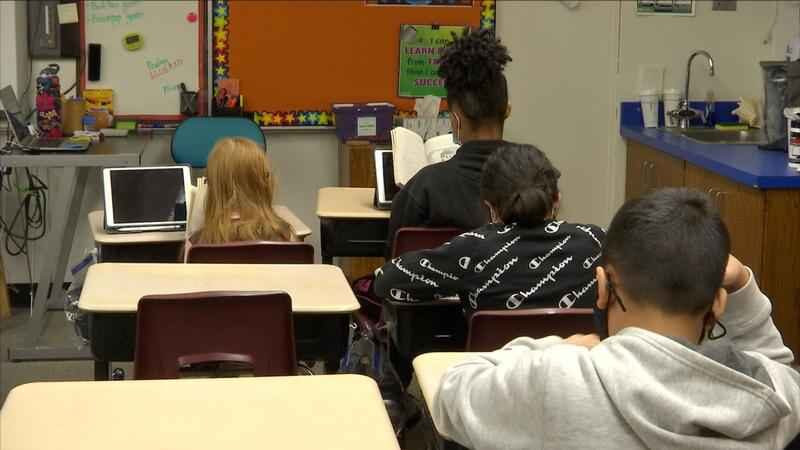Legislative auditor: Minnesota doesn’t define ‘achievement gap’, MDE’s role in addressing it

Students wear masks in a classroom
A new report from the Minnesota Office of the Legislative Auditor (OLA) says state law doesn’t clearly define an achievement gap or the education department’s role in addressing it.
The OLA’s report, which was released Tuesday morning, indicated the state, as well as the Minnesota Department of Education (MDE), have work to do to address achievement gaps. It specifically noted that MDE hasn’t annually monitored school progress toward their World’s Best Workforce goals, including reducing the achievement gap. Additionally, the department hasn’t developed and doesn’t typically help districts make improvement plans when they fail to reach achievement and integration goals. In addition, MDE doesn’t have a specific plan for American Indian education to address the achievement gap.
However, the report didn’t place all of the blame on MDE. It noted the state’s laws regarding achievement gaps need to be more clearly defined, and called some statutory requirements related to achievement gap initiatives “unclear or impractical.”
The auditor’s office recommended that the Legislature amend some state statutes to explicitly define an achievement gap and MDE’s role in addressing it, as well revise certain statutes to make more practical timelines and clear expectations for MDE.
Additionally, the report noted the positive impact the Regional Centers of Excellence has had on schools, saying many schools that have partnered with the centers have reduced their achievement gaps. OLA recommended that the Legislature should consider making the centers more widely available to help further address achievement gaps.
The state has six regional centers that are operated by regional service organizations and staffed by nonstate employees who provide tailored support to individual schools. However, currently, schools are only eligible to work with the regional centers if they’re identified by MDE as being one of the lowest-performing schools in areas like graduation rates or student performance on standardized tests.
As for MDE’s role in addressing achievement gaps, OLA’s report recommends that individual districts take the primary responsibility for improvement planning, but the report urges MDE to be more active in helping districts create those plans and annually monitor schools’ progress toward improvement goals, with results getting reported to the Legislature.
The OLA report focused on the oversight and administration of four MDE initiatives aimed at addressing achievement gaps: World’s Best Workforce, Achievement and Integration for Minnesota, American Indian Education, and the Regional Centers of Excellence.
MDE Commissioner Heather Mueller’s response to OLA regarding the report stated that it doesn’t encompass the full extent of the department’s work in helping schools address their achievement gaps and specifically said it “is missing key context” about funding and department constraints.
5 EYEWITNESS NEWS reached out to MDE for a statement but was referred to its full statement in OLA’s report, which starts on page 71.
A 2019 report by the Federal Reserve Bank of Minneapolis noted that Minnesota schools do well, on average, but have some of the largest achievement gaps by race, ethnicity and socioeconomic status in the country.